Try Book 1 for Free
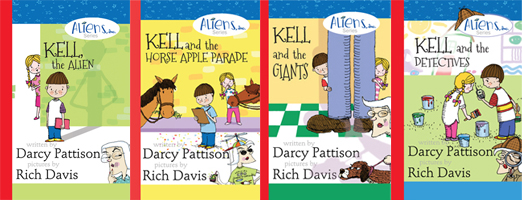
Assumption. I am assuming here that you’ve written a fantastic children’s picture book and the illustrations you’ve done or hired done are amazing. You’ve also assembled an amazing book using InDesign (recommended) or other software. This checklist takes up the process at the point where you have the files ready to upload. The checklist is useful whether you are producing a print book or an ebook, although some items may not apply in one or the other cases.
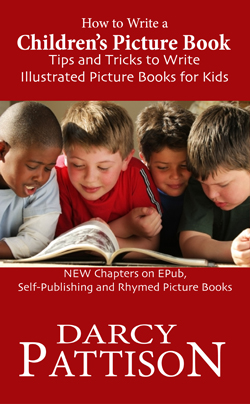
Double-Check the Book’s Production
Front Cover
Double-check spelling of everything.
Color reproduction of the art.
Back cover
Double-check spelling of everything.
Blurbs, quote or promo copy – do you have all the marketing material on the back cover that is needed? Any recent review quotes to add?
Copyright page
(Assumption: you want to sell this book to school libraries. If you only want to sell it as an ebook, then you only need to check the copyright date, since you probably won’t use an ISBN.)
Copyright date correct?
ISBN correct (if used)?
CIP correct? Are you using Publisher’s Cataloging-in-Publication data, which helps librarians catalog your book?
Interior
Check spelling, grammar and punctuation on every page.
Check position and reproduction of art on every page.
(Why are there 32 pages listed?)
- p. 1____Text _____Art
- p. 2-3____Text _____Art
- p. 4-5____Text _____Art
- p. 6-7____Text _____Art
- p. 8-9____Text _____Art
- p. 10-11____Text _____Art
- p. 12-13____Text _____Art
- p. 14-15____Text _____Art
- p. 16-17____Text _____Art
- p. 18-19____Text _____Art
- p. 20-21____Text _____Art
- p. 22-23____Text _____Art
- p. 24-25____Text _____Art
- p. 26-27____Text _____Art
- p. 28-29____Text _____Art
- p. 30-31____Text _____Art
- p. 32____Text _____Art
Marketing and Metadata Materials
Before you upload files, you’ll need your marketing material ready. I usually create a one-page Sell Sheet that includes the following information.
Exact Title:
Subtitle:
Series Name and Volume of this book:
ISBN, ASIN, and price for each format:
Description
The description is the time to hook your reader. The first 50 characters should give enough information to interest a reader in your book. Limited html is allowed on many platforms, so I often prepare two versions, one plain text and one marked up for html. For Kindle, you have 4000 characters–which is a lot. Use a word processor that counts the number of characters and use all of this valuable real estate.
Categories
Depending on the platform used, you may be asked to provide two or three categories. You can refer to the BISAC categories as a guidelines, but each platform may have its own quirks for this.
1.
2.
3.
Keywords
To help the book buyer find your book, most platforms allow you to insert from 5-7 keywords. You should have these ready; see Amazon’s advice on keywords.
1.
2.
3.
4.
5.
6.
7.
Age Levels
Often a platform will allow you to specify the age range for the book’s audience. Don’t try to cover every age (ages 1-15). Instead, choose a 3-4 year range. Typical ranges are ages 4-8, ages 5-8, ages 6-8, ages 8-12, ages 9-12, ages 12-15, and so on.
File Size
If you plan to publish the ebook on Kindle, you should know the file size. Full color children’s picture books are often 4-8 MGs of data. Because Kindle charges a delivery fee of $0.15 in the US, you’ll want to know this to decide on pricing.
Price for Different Formats
If you upload to multiple platforms, you’ll likely want to be sure to keep the data the same across them. It helps to write out your prices; be sure to update this data whenever you change it on one platform.
Cover Files
While I’m preparing marketing materials, I also like to create multiple versions of my cover files. I label them with the size and the resolution, so it’s easy to find later. Here are typical sizes I create for a square picture book cover, 8.5″ x 8.5″ It’s simple to create multiple files when the Photoshop program is already open, and saves me time later. Usually, I create jpeg files, but sometimes, I’ll repeat for .png files.
- Cover-2500×2500-300.jpg (This means the cover is 2500 px by 2500 px at 300 dpi.)
- Cover-2500×2500-150.jpg (This means the cover is 2500 px by 2500 px at 150 dpi. Some like to also prepare files at 96 dpi or 72 dpi for use on the web.)
- Cover-1000×1000-300.jpg
- Cover-1000×1000-150.jpg
- Cover-500×500-300.jpg
- Cover-500×500-150.jpg
- Cover-250×250-300.jpg
- Cover-250×250-150.jpg
With the Sell Sheet complete, and the books cover and interior files ready to go, it’s time to upload. Good luck with your book!

It’s not easy to create an inclusive book collection. Whether you’re a librarian creating a collection for an entire community, a teacher creating a collection for your classroom, or a parent creating a collection for your children, choosing books that reflect the diversity of human experience can be a challenging job.
That’s because creating a diverse book collection is about more than just making sure X, Y, and Z are represented. It’s not a matter of ticking off check boxes or making sure quotas are filled. For those committed to doing it right, building a diverse book collection requires contemplation, research, and awareness. But the rewards are great: a truly diverse collection of books can turn children into lifelong readers and promote empathy, understanding, and self-confidence.
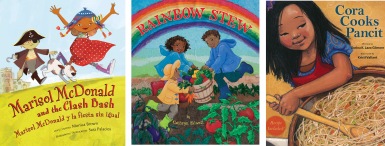
To make things a little easier, we’ve created a checklist to help.
Here are eight steps to all-inclusive reading:
- Does your book list or collection include books with characters of color? LGBTQ? Differently-abled?
- Does it include books with a main character of color? LGBTQ? Differently-abled?
- Does it include books written or illustrated by a person of color? Of different nationalities, religions or sexual preference?
- Are there any books with a person of color on the cover? Do the characters on the book covers accurately reflect the characters in the book?
- Think about your student population. Does your list provide a mix of “mirror” books and “window” books for your students—books in which they can see themselves reflected and books in which they can learn about others?
- Think about the subject matter of your diverse books. Do all your books featuring black characters focus on slavery? Do all your books about Latino characters focus on immigration? Are all your LGBTQ books coming out stories?
- Do you have any books featuring diverse characters that are not primarily about race or prejudice?
- Consider your classic books, both fiction and nonfiction. Do any contain hurtful racial or ethnic stereotypes , or images (e.g. Little House on the Prairie or The Indian in the Cupboard)? If so, how will you address those stereotypes with students? Have you included another book that provides a more accurate depiction of the same culture?
If the answer to any of these questions is no, here are some resources that can help:
Where can I find great diverse children’s books? A resource list
Beyond Good Intentions: Selecting Multicultural Literature
Seven Ways to Explore Race in the Classroom
How inclusive is my classroom library? A Toolkit
Disability in KidLit
I’m Here, I’m Queer, What the Hell Do I Read?
American Indians in Children’s Literature
Diversity in YA
What questions would you add? What resources would you recommend? As always, leave ‘em in the comments!
Filed under:
Diversity, Race, and Representation,
Educator Resources Tagged:
checklist,
diverse books,
diversity in the classroom,
promoting diversity,
resources 

This month-long series of blog posts will explain author websites and offer tips and writing strategies for an effective author website. It alternates between a day of technical information and a day of writing content. By the end of the month, you should have a basic author website up and functioning. The Table of Contents lists the topics, but individual posts will not go live until the date listed. The Author Website Resource Page offers links to tools, services, software and more.
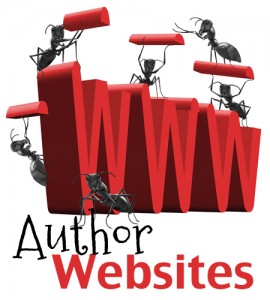
Way back in the first week, of the month, I suggested that you go and look at the websites of other authors in your genre. Now that you’re almost done with your site, go back and look around again and this time, see what else you need to tweak. Which author websites you admire the most? Which do you–as a fan–visit the most often? What do you GO BACK for? That’s the real question–what will keep a fan coming back to your site? How do the websites stack up against the Codex checklist?
Start looking for author websites here:
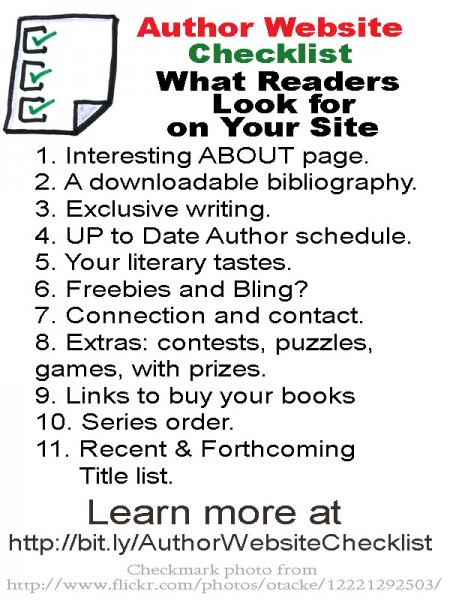
Last time: Author Website Planning Checklist
Where on your website did you include these things? List all the appropriate page(s). Can you add something now?
Exclusive unpublished writing: ______________________
Author Schedules: ________________________________
Author’s Literary Tastes:___________________________
Insider Information: _______________________________
Freebies: ________________________________________
Regular Contact: __________________________________
Contests, puzzles, teacher’s guides, book club discussion guides, puzzles, playlists, coloring pages, etc.__________________________________
In other words–don’t launch before you are ready! Take the time to get it right before you let the world know that your website is live!

Now is the time to do a check of your site to make sure you’ve covered everything!
If you feel like you’re lacking in some area, then click on the link and re-read the appropriate post.
Or go back to the Table of Contents to review material.
General Good Practices for a Website
- In 3 seconds, can a reader figure out where they are and what they can do here?
- Is there a search box on every page so readers can find what they need?
- Is the site attractive, easy to read–a clean usable design?
- Do you use great titles on your posts so they will be found by search engines?
- Does every page have a Call to Action?
- Are your social media links easy to spot and use on every page?
- Have you clicked on every link to make sure they work?
- Did you include a way for people to contact you through a form or by email?
- Are you tracking statistics for your site?
- Did you include a privacy page? Are you COPPA Compliant?

Remember that you have choices about which page will hold this info. Where did you put these things that readers want?
- Is your ABOUT page interesting and fun, yet informative?
- Did you include a downloadable bibliography and/or biography?
- Have you provided exclusive writing only published on your website?
- Is your Author schedule listed and UP TO DATE?
- Are you letting readers know something about your literary tastes?
- Have you provided any freebies or bling for your fans?
- Do you have a newsletter or someway for fans to connect and stay connected?
- Did you include any of these: contests, puzzles, and games, with prizes like autographed copies of books?
- Are you providing a way for readers to buy your books, either on your site or through a link to an online bookseller?
- If you have series, do you provide a list that explains the order for reading that series?
- Are your recent books on the Home page, or easy to find?
PET PEEVES: Why Readers Hate an Author’s Website
DearAuthor.com has a great post on the Top Ten Peeves From Booksellers and Readers about Author Websites. I’ve summarized the list, but you should read the whole article. Insightful.
- No printable list of your books.
- No ISBNs.
- Series not identified and books not put into a series list.
- No contact author on front page
- Having to hunt for most recent releases.
- No list of future releases.
- No list of awards.
- No links to order.
- Not friendly.
- Nothing to bring the reader back.
How are you doing? Is your website stacking up? What’s the hardest/easiest thing you’ve done on your site this month? What would you add to this checklist?

 When I’m frustrated, it’s usually a sign that I’m trying to control something I can’t control. This can be a person or a situation or an event. The process can churn your mind into mush until you can’t think.
When I’m frustrated, it’s usually a sign that I’m trying to control something I can’t control. This can be a person or a situation or an event. The process can churn your mind into mush until you can’t think.
On the other hand, making a 180-degree switch and focusing on the things I can control (self-control) is the fastest way out of frustration. This concept certainly applies to your writing life.
Words of Wisdom
Remember the Serenity Prayer? It goes like this: “God, grant me the serenity to accept the things I cannot change, courage to change the things I can, and the wisdom to know the difference.”
How about reducing frustration with your writing life by applying that wisdom to your career? Here are some things to accept that you cannot change:
- How long it takes to get a response from editors and agents
- Rejections
- Editors moving before buying the manuscript they asked to see
- Size of print runs
- Reviews
- Publisher’s budget for your book’s publicity and promotion
Trying to change anything on the above list is a sure-fire route to frustration and wanting to quit.
However, do you have courage to change the things you can? Here are some:
- Giving yourself positive feedback and affirmations
- Reading positive books on the writing life
- Studying writing craft books
- Writing more hours
- Reading more books in the genre where you want to publish
- Attending local, state, regional and national conferences you can afford
- Joining or forming a critique group
Wisdom to Know the Difference
If you’re battling frustration and discouragement with the writing life, chances are good that you’re trying to control something beyond your control. It will make you crazy! The fastest way back to sanity is to concentrate on what you can control about the writing life.
Choose anything from that second list–or share an additional idea in the comments below–and get on with becoming a better writer. In the end, that’s all you can do–and it will be enough.











 When I’m frustrated, it’s usually a sign that I’m trying to control something I can’t control. This can be a person or a situation or an event. The process can churn your mind into mush until you can’t think.
When I’m frustrated, it’s usually a sign that I’m trying to control something I can’t control. This can be a person or a situation or an event. The process can churn your mind into mush until you can’t think.
I have always loved Children’s Book Press and Lee and Low! Barefoot Books is another wonderful publisher focusing on folktales from people all over the globe! As the mother of a little guy with a genetic syndrome and physical disability, it is so lovely to have books featuring kids wearing leg braces, using wheelchairs, and a story about a little boy who is a bit different written by a woman whose brother has autism. This small, independent publisher has been publishing beautiful books for twenty years and should definitely be on your go-to list for your home or classroom library!